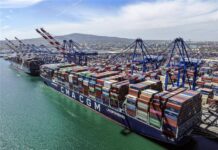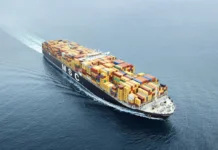
Logistics markets and supply chains faced another confusing, dramatic few days last week as the US Court of International Trade ruled that President Trump wrongly invoked the International Emergency Economic Powers Act to apply reciprocal tariffs on a long list of countries and other tariffs on Mexico, Canada and China targeting fentanyl smuggling.
The ruling ordered the administration to remove the current 10% global tariff, the 25% tariffs on Canada and Mexico and the 30% tariffs on China within ten days, while tariffs on steel, aluminum, vehicles and automotive parts would remain in effect as they are not based on the IEEPA.
The next day, though, the administration’s appeal to the federal circuit court led to an administrative stay that will keep those tariffs in effect during appeal.
The court asked the plaintiffs to file a brief detailing their complaint by June 5th and the government to provide a response by June 9, though the appeals process could take weeks and include an appearance in front of the Supreme Court.
Even if the appeals process upholds the original ruling and voids the IEEPA tariffs, the White House is likely to use other avenues to enact tariffs including Section 232 which Trump used to tariff steel and aluminum in both administrations – with an additional 25% increase on steel promised for this week – and to tariff vehicles and automotive parts this year.
Trump relied on Section 301 for 7.5% to 25% tariffs on nearly $400B of Chinese imports in 2018 and 2019 and could potentially use this law again, and the president used Section 201 for tariffs on washing machines in 2018.
Each of the above laws requires some form of an investigation of the trade issue by a federal agency, and often a comment or review period before the president can take action. For some, congressional approval is also required.
Other options include Section 122, which can be used to apply 15% tariffs on imports for 150 days, and Section 338, which allows the introduction of 50% tariffs on a specific country, but has not been used since the 1940s.
Most of these options typically take weeks or months, and could be more difficult to leverage for tariffs as high and as broad as the IEEPA ones. But the president has already requested or received reports from agencies for most of the trade issues that the IEEPA tariffs were being used to address, which could shorten the implementation timeline.
In the meantime, there are indications that tensions between China and the US – which had eased somewhat and resulted in lower tariffs since May 14 – are rising again.
So, with the August 14th deadline for a trade agreement approaching and this latest deterioration in China-US relations possibly increasing the likelihood of tariff increases after that date, transpacific ocean demand is surging as shippers rush to bring in peak season goods before then.
Though Asia – North America container rates were about level last week, so far this week, June 1st General Rate Increases have started to push daily prices up sharply via this demand jump. Rates have spiked 72% to the West Coast since last week to US$4,765/FEU and 44% to the East Coast to US$5,721/FEU, with more increases likely and additional hikes announced for mid-month.
The sharper climb for West Coast rates may reflect shippers’ need for speed and preference for a shorter journey as they frontload ahead of the deadline. Carriers have likewise scheduled record capacity to the West Coast through July to serve this anticipated demand.
The surge in China-US volumes since mid-May is already leading to significant congestion at some major ports in China and in Singapore and other tranship hubs as well. Some observers are concerned that this jump in demand could overwhelm the ports of LA and Long Beach in a few weeks, though port officials say they are ready to handle the volume increase.
Carriers are also seeking to increase Asia – Europe container rates on early June GRIs, with daily rates up $300/FEU to $2,650/FEU so far this week to N. Europe and about US$600/FEU to US$3,575/FEU to the Mediterranean and additional increases planned by some carriers for mid-month as well.
Though capacity levels are falling on these lanes as some carriers shift vessels to the Transpacific and congestion at European hubs continues to cause delays, many in the industry are skeptical these price increases will stick as demand remains flat.
But even last week, rates were about double 2019 levels as Red Sea diversions and their drag on capacity keep rates well above normal on these lanes.
And though the Houthis announced that the Red Sea is now safe for any vessel not making port calls in Israel, carriers are still unlikely to go back in the near term.
For air cargo, the court ruling likely would have removed the US’s suspension of de minimis eligibility for Chinese goods. The suspension, which has been in place since May 2nd, has led to a big drop in B2C e-commerce volumes moving from China to the US via air cargo.
The stay will likely keep e-commerce platforms away from the air on this lane, though the August deadline for a China-US trade deal may be driving some ocean to air shift, helping to keep Freightos Air Index China-US rates elevated at $5.35/kg last week, up from US$5.14/kg the week prior.
The e-commerce shift away from transpacific air cargo is expected to have a significant impact on the market, though, and is one factor in IATA’s recent projection for little to no growth in global air cargo volumes for 2025 after a 12% jump in demand in 2024.
The article was written by Judah Levine, Head of Research at Freightos





